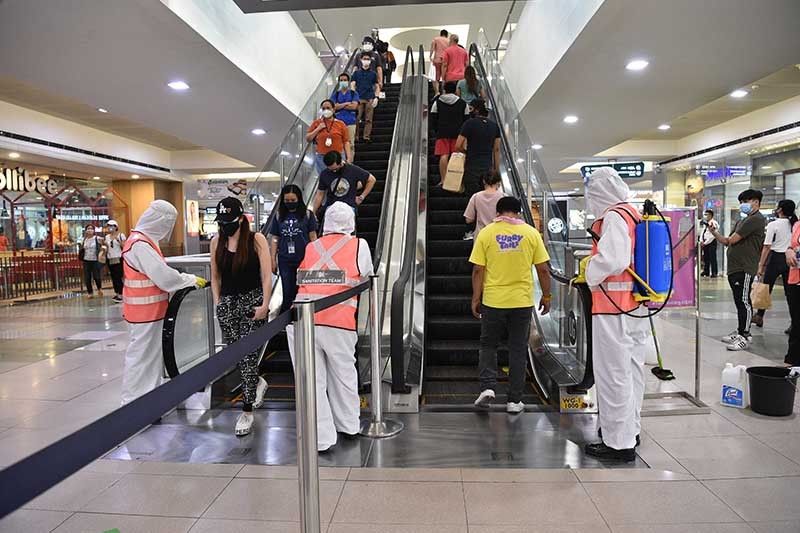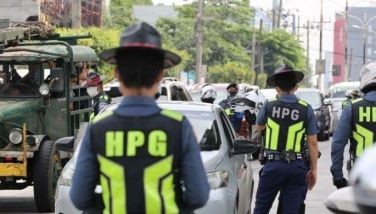Are current ventilation guidelines vs COVID enough? Wind expert says they're vague

MANILA, Philippines — Guidelines on ventilation of indoor spaces are vague and place the responsibility for ensuring airflow on individuals instead of on the government and on building owners, a wind dynamics expert said.
Ventilation—or the process of bringing fresh air into indoor spaces—can help prevent the spread of COVID-19, which also undergoes airborne transmission.
Joshua Agar, a civil engineer specializing in wind dynamics, said the guidelines on ventilation issued by government agencies are "vague" and do not call for changes like installing filters in ventilation systems.
"They’ve just issued guidelines of reaching what are already given in the heating, ventilation and air conditioning (HVAC) guidelines for the air-change rates to meet the targets of reducing the relative risk factor," Agar told Philstar.com last week.
For Agar, most of the measures "reek of individual responsibility."
"The call to revamp the ventilation system of indoor establishments are still missing. Specific evidence-based provisions and implementation of the filtration procedures for indoor establishments and air-conditioned modes of transportation are still missing," he said, noting the transportation department has yet to install adequate filters in trains in the capital region and in air-conditioned modes of transportation.
Plastic or acrylic barriers are still being used in buses and taxis. According to Jose-Luis Jimenez, an aerosol expert and chemistry professor from the University of Colorado-Boulder, plastic barriers do not reduce the spread of COVID-19.
Government advice
Last week, the Department of Health stressed the importance of proper ventilation in reducing the potential for COVID-19 transmission.
"Nais naming linawin ang proteksyon buhat ng proper ventilation at airflow. Mahalaga ito para maiwasan ang COVID-19 infections dahil mabilis kumalat ang virus indoors lalo na sa mga saradong lugar na walang hanging pumapasok," Health Undersecretary Maria Rosario Vergeire said.
(We want to clarify protection related to proper ventilation and airflow. This is important in avoiding COVID-19 infections because the virus spreads quickly indoors, especially in closed spaces with no airflow)
Proper ventilation can be achieved by always keeping windows or doors open for fresh air to flow or placing an electric fan in front of a window for good air circulation, the department said. If the weather is too hot to keep windows open, windows can be opened for a few minutes every hour.
The agency also reminded the public to meet with friends, colleagues or relatives in a well-ventilated space. Physical distancing and wearing of face masks must be practiced at all times. If possible, interactions must be limited to an hour.
Last year, the Department of Labor and Employment issued guidelines for proper ventilation in workplaces and public utility vehicles. The agency emphasized the need to maximize natural ventilation through doors and windows in non-air-conditioned spaces.
For HVAC systems, "outdoor air supply should conform to the recommended breathing zone ventilation rates for the purpose of general air dilution and comfort zone." DOLE recommended that ventilation systems should run for at least 30 minutes before and after spaces are occupied.
It added that exhaust fans in restroom facilities should be functional and operational at full capacity when the building is occupied.
For public transport, adequate ventilation by opening windows while in transit and regular maintenance of filters of air-conditioning units must be ensured.
DOLE warned that in case of violation or non-compliance with government guidelines, applicable sanctions under pertinent laws and rules will be imposed.
Airborne too
In a televised briefing in January, President Rodrigo Duterte asked Health Secretary Francisco Duque III if COVID-19 is airborne. The health chief did not categorically answer the president and instead pointed to failure to comply with health protocols.
There is "no such thing as purely airborne," Duque said when asked by Philstar.com if the DOH holds that the virus undergoes airborne transmission.
"[The virus] still basically spreads through droplet infection if size of particle is more than five microns. So, depending also sa size. The smaller the droplet nuclei, the more it can spread widely especially in closed settings," he said last month. A micron is one millionth of a meter.
Scientists have been arguing over how the virus spreads, with aerosol experts saying since the beginning of the pandemic that the coronavirus is airborne.
"This is the main reason why the World Health Organization and in extension, DOH, is reluctant to directly communicate that COVID-19 is airborne, because they don't want to take responsibility of that grave blunder that is a result of the dogma that has long dominated the medical field for so many years," Agar said.
The WHO had long held that SARS-CoV-2—or the virus that causes COVID-19—is transmitted primarily through droplets when an infected person coughs, sneezes or speaks.
It took until 2021 for the agency to acknowledge that COVID-19 is transmitted through aerosols too.
According to the WHO, an individual can be infected with COVID-19 when infectious particles that pass through the air are inhaled at short range (short-range airborne transmission) or if infectious particles come into direct contact with the eyes, nose or mouth (droplet transmission).
The virus can also spread in poorly ventilated and/or crowded indoor settings because aerosols can remain suspended in the air or travel farther than conversational distance (long-range airborne transmission).
People may also contract COVID-19 when touching their eyes, nose or mouth after touching surfaces or objects that have been contaminated by the virus.
Masking, air quality
For public health advocate Dr. Tony Leachon, the government must provide Filipinos with free medical-grade masks.
"The only way to adapt to the environment is physically to arm ourselves with the best protective gear or measures that we have," he said.
Agar also said the call for proper ventilation is linked to the call for the improvement of air quality in cities. — Gaea Katreena Cabico
- Latest
- Trending





























